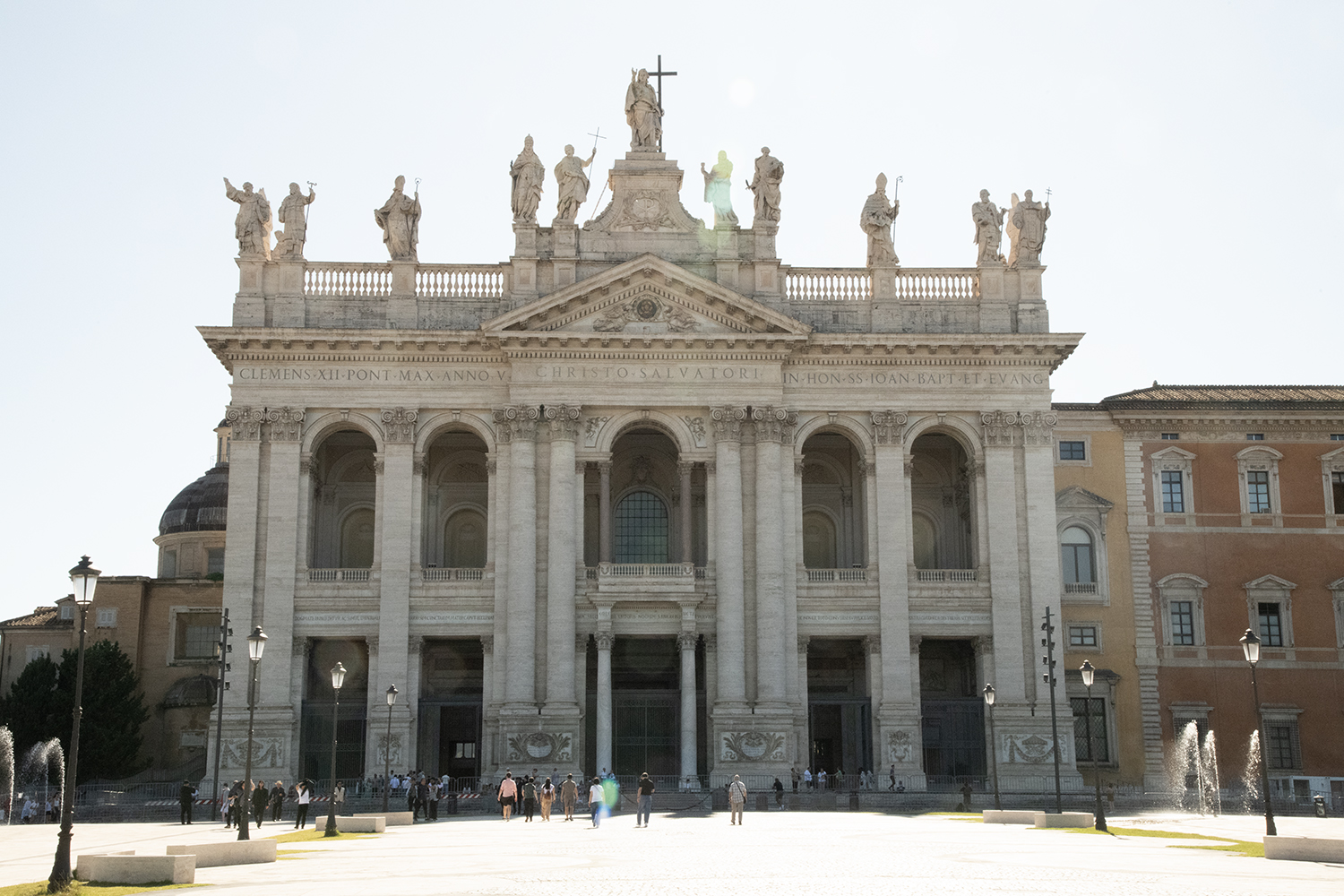
This is the first of an eight-part series reflecting on various aspects of the four major basilicas, their liturgical character, and the theological/devotional aspects of each one’s Porta Sancta
It was 1975 when I first heard of a Holy Year. Television news broadcast film of Pope Paul VI opening the Porta Sancta at St. Peter’s in Rome, and our family talked of the history and significance of the event. My mother, in particular, explained how Holy Years were celebrated once a century, then every half-century, then every twenty-five years[i]. The Porta Sancta would be opened, and all who made pilgrimage and entered through those doors would receive special grace and blessing. The momentousness of the occasion made an impression such that I set myself the goal of making the pilgrimage for the next Holy Year in 2000.
But 2000 came and went, the doors opened and closed, and I was not there. Yes, plans had been made, but the expectation of our first child precluded our pilgrimage and those plans were cancelled in favor of other priorities. Perhaps as a consolation, our daughter was born on Epiphany of 2001. Our second daughter arrived three years later, which meant that our pilgrimage group now numbered four. 2025 was the new target. The girls grew up hearing of my determination to make that pilgrimage.
Time passed, the girls graduated from high school and pursued higher education in the Arts. The eldest in Art Education, the younger in Interior Architecture. As part of her academic requirements, our Interior Architect was required to spend a summer abroad. Her destination: Rome. The date: Summer of 2025.
I warned her, I would be sleeping on her floor while she was there.
As it played out, I didn’t sleep on her floor, but stayed with my wife in various Pensione and Hotels between Rome and Bolzano. The first week in Rome, we passed through the Portae Sanctae at all four major Basilicas in Rome. Each was a profoundly meaningful experience and fulfillment of a fifty-year dream.
But this is not “George’s Roman Vacation” or even an attempt at a complete diary of our Italian adventures. This article will examine the experience of passing through the Holy Doors at each of the four major basilicas, and some reflection on those churches from the viewpoint of a Liturgical Artist. Essentially, what can we discover about the theology and experience of the life in Christ in each of these historic and sacred places. So, follow along as we enter this pilgrimage in the same order we visited each basilica.

The original intent was to go down to St. Paul Outside the Walls, but once on the Metro we changed our mind and headed to the Lateran. This is the first major Christian church built inside the Roman walls after the Edict of Milan in 313. The residence of the pope until the 15th Century, during the Middle Ages St. Johns was in open farm country. Although decidedly urbanized today, the approach to the church retains an openness not seen elsewhere. Even with the modern urbanization the area east of the Archbasilica retains an aspect of its agrarian past (photo 1). But the history of St. John Lateran (originally Christ the Savior) is well known and widely published. Let us skip forward to the Porta Sancta and some aspects of the liturgical character of the space.
The bronze door is the work of sculptor Floriano Bodini and was originally created for the 2000 Jubilee (photo 2). In the words of Msgr. Antonio Screnci the image “summarizes the mystery of redemption”. Thus, Mary stands before the crucified Christ while also holding the infant Jesus. Mary directs the viewer to Christ on the Cross while embracing the Christ child. We see here a blending of the Eastern Hodigitria (Mary directs the viewer to Christ) and Eleousa (Loving Affection) icons. Distinctively, the child also gestures toward the crucifixion. The crucified Savior looks down upon mother and child yet bears the wounds of His death (notably, the nails pierce his wrists, not the palms of the hands).
The image further embraces a wide range of theological and devotional qualities. The affective aspect, intended to elicit an emotional response to the Passion, is very much in the nominalist influenced tradition of the late Middle Ages. At the same time, Christ’s eyes are open, thus reflecting the more ancient theology of the two natures (Divine and Human) united in the one person of Jesus. Thus, while Jesus dies in his humanity, he retains his immortal divinity. The stars of heaven, derived from decorative elements inside the basilica, indicate the culmination of the redemptive narrative in the Resurrection and Ascension. Related, the rectangular element at the base recalls the empty tomb. Combined with the crucifixion it becomes the Man of Sorrows, another late Medieval motif that was originally also linked to the Eucharist. Hence, the Eucharistic Liturgy (Mass) and Communion make present to contemporary and future believers the redemptive incarnation, life, and sacrifice of Christ. There are aspects here of the theology of Aquinas and the Church Fathers.
It is very apparent that it has become the custom of those entering the doors to rub the feet of the Christ Child, and the hand of Mary (the crucified Christ is too high to reach). This act of connection reminds us of the core purpose of the Incarnation described in I John: “What we have seen, what we have touched with our hands…” The innate need for physical contact with each other and the sacred, so ancient, is here revealed to be still profound.
____________________________________________________
[1] Prior to 1300 there was a legend about making pilgrimage to Rome at the turn of every century. Pope Boniface VIII initiated the first Holy Year in 1300 and the Jubilee was observed every 50 years until 1470 when it was reduced to every 25 years.